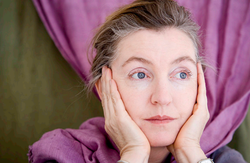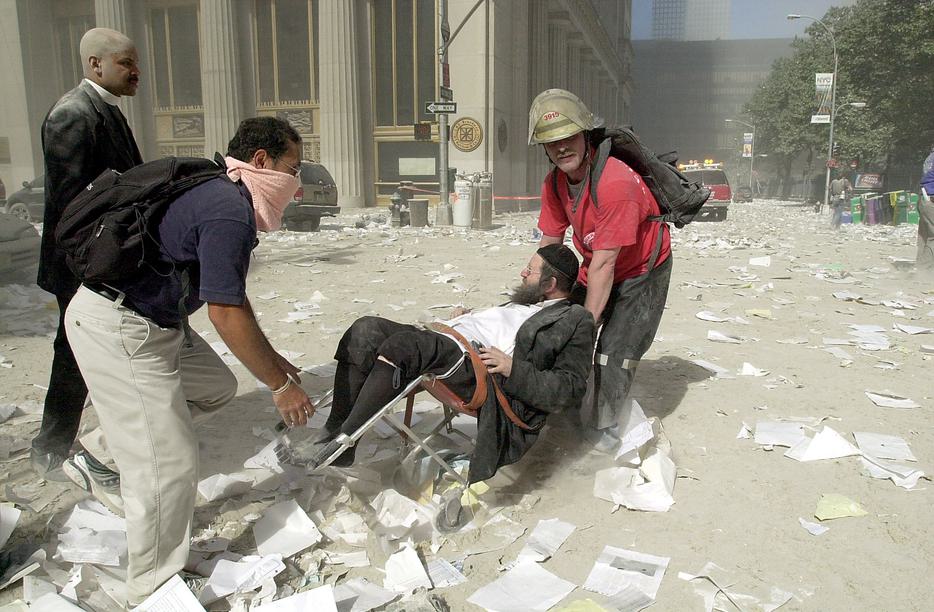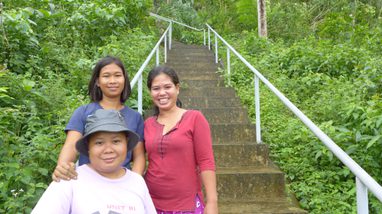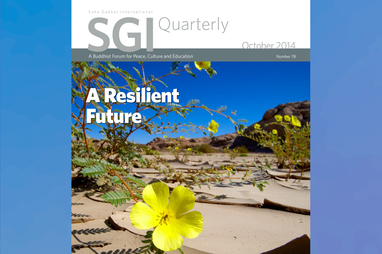SGI Quarterly

Rebecca Solnit, from San Francisco, is the author of A Paradise Built in Hell: The Extraordinary Communities That Arise in Disaster, in which she describes the surprising ways peoples’ humanity comes to the fore in times of disaster. She is a prolific essayist and author of 15 books on a wide variety of topics. This article is an edited transcript of her talk at Tokyo University of Foreign Studies on March 13, 2012.
In disaster, civil society mostly succeeds and institutions mostly fail. At such times, you find out what’s solid. Civil society is usually solid. The government is usually not. It fails in any number of ways—inadequate preparation, the hubris of thinking they can control what cannot be controlled, whether it’s dangerous materials or complex systems or civil society. Often, it fails just because the crisis is bigger than its capacity. A city fire department can, for example, put out 10 or 20 fires at once. After an earthquake, you might have 100 or 300. The government is overwhelmed. The firefighters who matter at that moment are going to be you, your family, your neighbors.
The great disaster sociologist Chip Clarke argues, “As individuals, we have to assume that organizations will fail us . . . If we really want to prepare for disaster, we need to push resources down to the very local level . . . Command and control of disaster doesn’t work. It never has. We need to disorganize for disaster.”
Clarke means that disasters cannot be managed by people at the top. So many decisions need to be made so rapidly that they cannot all be referred to authority figures at a distance. Civil society often succeeds where institutions fail in the first minutes, hours and days. And often, people find in that newly visible, powerful civil society, a new sense of identity, belonging and possibility. Thus it is that disasters can be a little like revolutions, in the moment of rupture, where nothing is certain and everything is possible. This can be terrifying, as well as exhilarating. Disorganizing for disaster means that the organization happens at the grassroots level, as mutual aid between ordinary people, as improvisation. It can be very organized and very effective. But it comes from the bottom up, not the top down.

Evacuating a man through rubble and debris after the collapse of one of the World Trade Center towers in New York on September 11, 2001. [Photo credit: © Stan Honda/AFP]
This is not an argument for disasters. I wish they never happened. But they happen. And when they do, they are terrible—the death, the loss, the destruction, the contamination. What is wonderful is the way people sometimes respond. And so one of the challenges disasters pose is, can we be those more altruistic, more free, more deeply connected people, those people who remember what matters and what does not, in ordinary times? Can we not go back to normal, but remain more engaged, more aware, more committed and less attached?
It was a disaster that made me begin to pay attention to disasters. At 5:17 pm on October 17, 1989, a magnitude 6.9 earthquake stopped everything in the San Francisco Bay Area. Electrical power failed. Everything was disrupted, including everyone’s ordinary routines and routine thoughts. I was thrust into an intensified present where the people around me in the city mattered. Old problems, long-term futures, distant events, ceased to exist in our minds.
As the years went by, I noticed that people’s faces often lit up when they talked about the earthquake. A friend told me with wonder nearly 20 years later how he had driven the seven miles to his home, and encountered someone at every single intersection directing traffic. They were volunteers. No one had organized them. They saw the need, and they filled it. In the rough Oakland neighborhood where the freeway collapsed, people spoke about how poor African-American men became the first rescuers, how an anarchist collective set up a kitchen to feed the rescuers before the Red Cross showed up. Other friends in a neighborhood that had no electricity for three or four days loved the way candlelit bars became community centers. Restaurants cooked their food that would perish and gave it away. And everyone talked to everyone else.
In the sudden disappearance of institutional authority, people often behave magnificently.
This is the essence of many disaster responses. Everyone talks to everyone else. The old divides no longer divide us. People step up out of their private lives into the shared and public space we find ourselves in in crisis, and they feel connected by the disaster that we have all undergone together.
It was 9/11 that made me think again about disasters. The nearly 3,000 deaths were terrible. The persecution of Muslims and Arabs within the United States afterward was terrible. The wars were obscene, but the initial response of the great majority was beautiful. Most people are neither selfish nor panicky in disaster. They do not flee, but converge once the immediate danger of a hurricane, a flood, an earthquake, is past. Inside the collapsing towers, people evacuated themselves and others in amazing ways. An armada of boats of all kinds spontaneously assembled, and about a third of a million people were evacuated by water from Lower Manhattan.
Authoritarians are pessimists about human nature. Anarchists are optimists, in that they believe that we can govern ourselves. And disaster seems to bear that out. In the sudden disappearance of institutional authority, people often behave magnificently, better than in everyday life.
When I began to investigate disaster, I was like a person who opened a door, curious about the room I expected to find. I foresaw a medium-sized room with some interesting things in it. But I opened the door onto a stunning and unfamiliar landscape that stretched out into the distance.
I call it public love, in contrast to the private loves of family, romance and home life. The public loves encompass the love of place, of civil society, of meaningful work and a role in making the world, of hope about the future, of a sense of possibility. They involve a larger sense of home that includes the neighbors, the village, or city, or region, the culture and community, or even humanity.
Disasters taught me that civil society is solid, that governments and elites are often hollow and collapse, morally and practically, in emergencies. Ordinary people are strong enough, brave enough, creative enough, generous enough to improvise the conditions of survival in the most horrendous circumstances.
What else I learned when I opened that door onto the great landscape of insurrectionary human nature is that utopia and the revolution are not in the future. They’re all around us in a thousand ways. Disaster is like everyday life, only more so. In a disaster, you can see that clearly; in everyday life, one of the challenges is to learn to see the subtle forms that generosity takes and the openings in which we can connect, and to hear the call to be the largest, most heroic versions of ourselves. We are so often told we should do these things, but before I began to do this work, I did not hear they are not only virtuous, but they bring us joy and meaning and a sense of our own power.
Related Content


